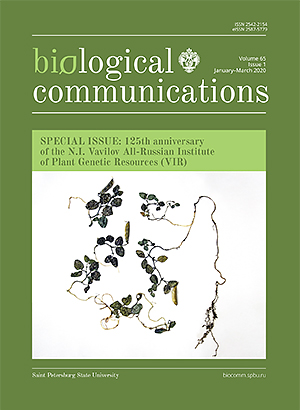Cotton genome evolution and features of its structural and functional organization
DOI:
https://doi.org/10.21638/spbu03.2020.102Abstract
Allotetraploid cotton Gossypium hirsutum L. is not only an important crop, but also a model organism used to study such processes as polyploidization, plant genome evolution and the influence of polyploidy on gene expression. The present article provides a review of studies devoted to the taxonomy of the genus Gossypium, the evolution of the genomes of its representatives (including 45 diploid and 7 allotetraploid species), and the functional divergence of duplicated copies of the same genes in allotetraploid species. The discussion concerns the areas of individual species’ origin, as well as the reasons of the high variation in genome size (from ~880 Mb to ~2400 Mb), which was influenced by both full-genome duplications and the spread of mobile genetic elements. The data support the fact that the expression of genes in allotetraploid cotton changes as a result of polyploidization, and that one of the two subgenomes dominates in the formation of one or another trait. The considered data shed light on the features of the evolution of plant genes and genomes.
Keywords:
Allopolyploid genome, cotton, evolution, functional divergence, gene duplication, Gossypium, homoeologous genes, mobile genetic elements
Downloads
References
Downloads
Published
How to Cite
License
Articles of Biological Communications are open access distributed under the terms of the License Agreement with Saint Petersburg State University, which permits to the authors unrestricted distribution and self-archiving free of charge.





